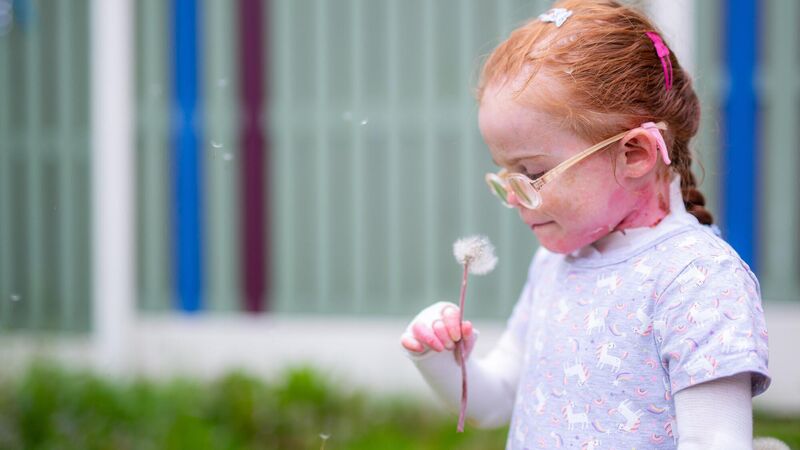Charity call for mental health support for families of children with painful skin condition

Maria Maciukas became the cover star of a book aimed at explaining epidermolysis bullosa to primary school children. Picture: Richard Sheehy
A charity representing 300 people with a fragile skin disorder has called for ringfenced mental health support for sufferers and for parents of young children who “scream in agony for hours”.
Extremely painful blisters develop on the skin and internal lining of the body after even a light touch due to this progressive condition epidermolysis bullosa (EB), also known as Butterfly Skin.
Debra chief executive Jimmy Fearon said: “Carers and families also need support. It is hard to imagine anything more upsetting than listening to your child scream in agony for hours when their wounds are being dressed. But this is the reality for parents of children or adults with the most severe form of EB.”
He added: “People with EB are literally crying out for help with their mental health as they struggle to cope with stress, feelings of loneliness, and isolation.”
The charity called for ringfenced funding of €160,000 to support recruiting a psychologist to work full-time with this group of 300 children and adults.
“Debra Ireland asked for a psychologist for EB sufferers in our pre-budget submission last October, but the call went unanswered,” he said. “But just because the Government ignored our plea, doesn’t mean the need is no longer there. Far from it.”
“EB is a hugely distressing condition and in the most extreme cases, the treatment involves extremely painful bandage changes,” he said.
“These and other patients face additional stressors, such as feeling they may be a burden on their families and the lack of nursing resources, ramps up the pressure.”
Patients also speak of meeting healthcare workers who are not aware of this condition, meaning families have to repeatedly explain their symptoms.
Unlike some other skin conditions, EB is not always visible. Mr Fearon said, as a result: “Many sufferers have faced the indignity of being judged for parking in disability bays.”
The previously reported on a young Dublin schoolgirl who became the cover star of a book aimed at explaining this condition to primary school children.
Maria Maciukas, 7, needs new bandages every day to cover her blisters. Her mother said it can take up to three hours to do this each time.





